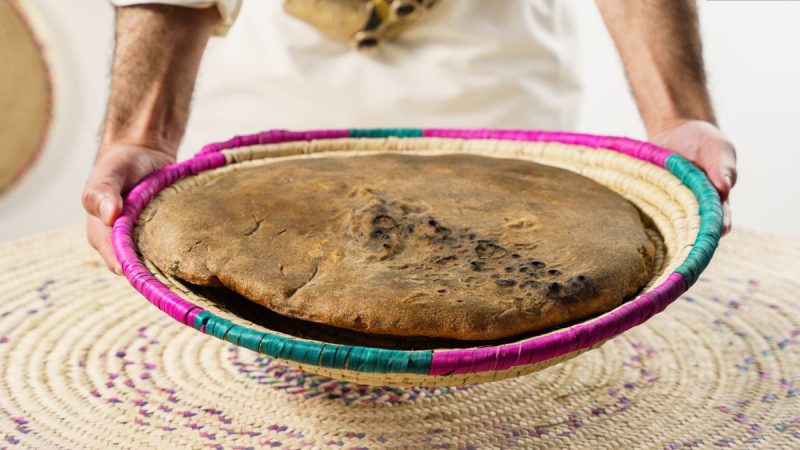The second Dar Festival at Al-Mousa Heritage Village in Al Bahah has been a major talking point. But there’s one thing that really attracted the people here. Yes, it is the art of skilfully preparing local bread from the Al Bahah region that has attracted visitors and residents. Yes, considered to be a staple food for the people in the region, here is all about Muqana.
What Is Muqana Bread?
It seems that Muqana bread, which is a staple for the people in the region, has attracted visitors and residents at the second Dar Fest. In case you’re wondering, Muqana is a staple food for people in the region. It is a bread that’s made by mixing flour with water and is then made by placing the dough on a thin stone that’s been heated by a fire lit beneath it.
This staple dish is made by covering the loaf with a dish-like object that’s made from thin iron or pottery. After this, it’s submerged under ashes and numbers and a small fire is also lit on the top. Once cooked, it is ready to be taken out and served. Among the locals, making the largest loaf is often seen as a sign of hospitality.
Millstone Also A Point Of Attraction At Al-Baha Fest
Each of the regions in the kingdom keeps a record that reflects the cultures, customs, and traditions of the inhabitants. This bread was chosen as the main dish from the region by the Culinary Arts Commission, as a part of a project of designating official dishes for each area of the kingdom. This selection was made on the basis of criteria set by the national and regional dishes narrative project.
Besides the Muqana bread, millstone was also a point of attraction for people at the festival. A traditional household item, it was used for grinding grain crops in the past. In fact, it comprises two circular stones with the upper stone being larger than the lower one. With a small opening in the middle for adding more grains, there is a pole in the centre for maintaining the balance when rotating. Finally, there’s a wooden pole at the end of the stone for holding and rotating it during the grinding process.
Cover Image Courtesy: X/MOCCulinary

